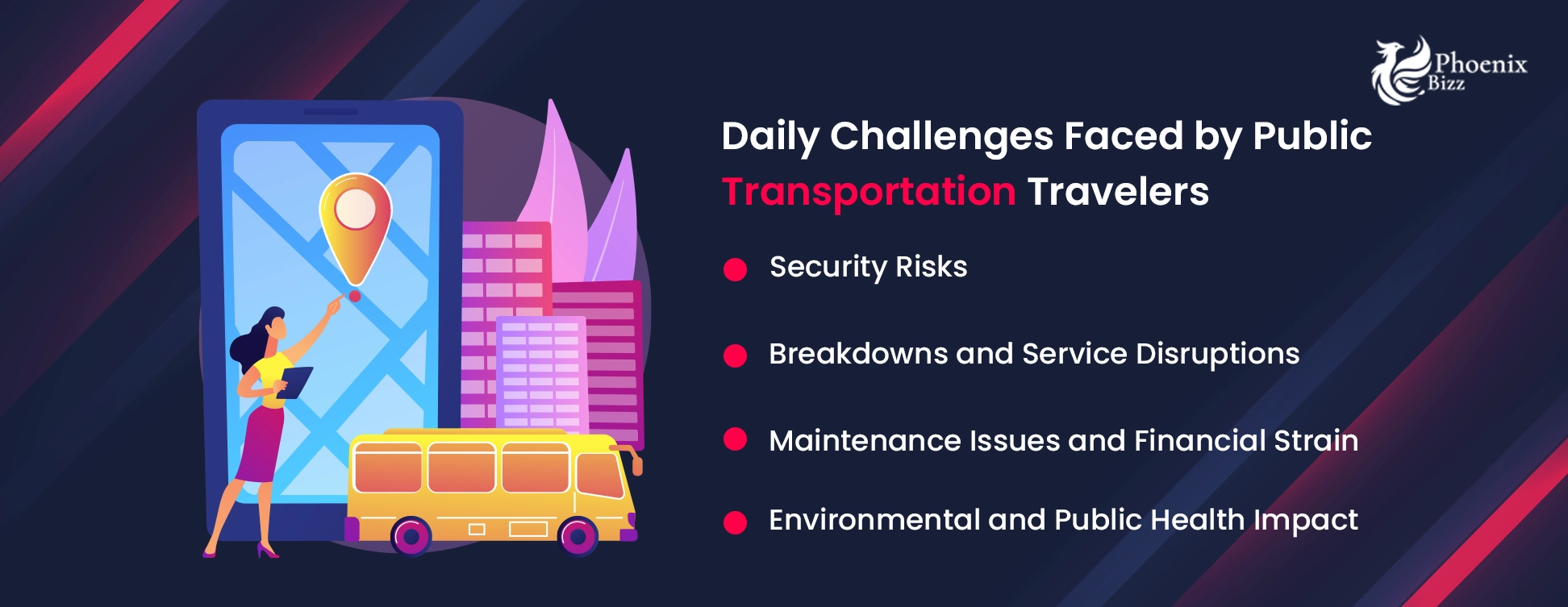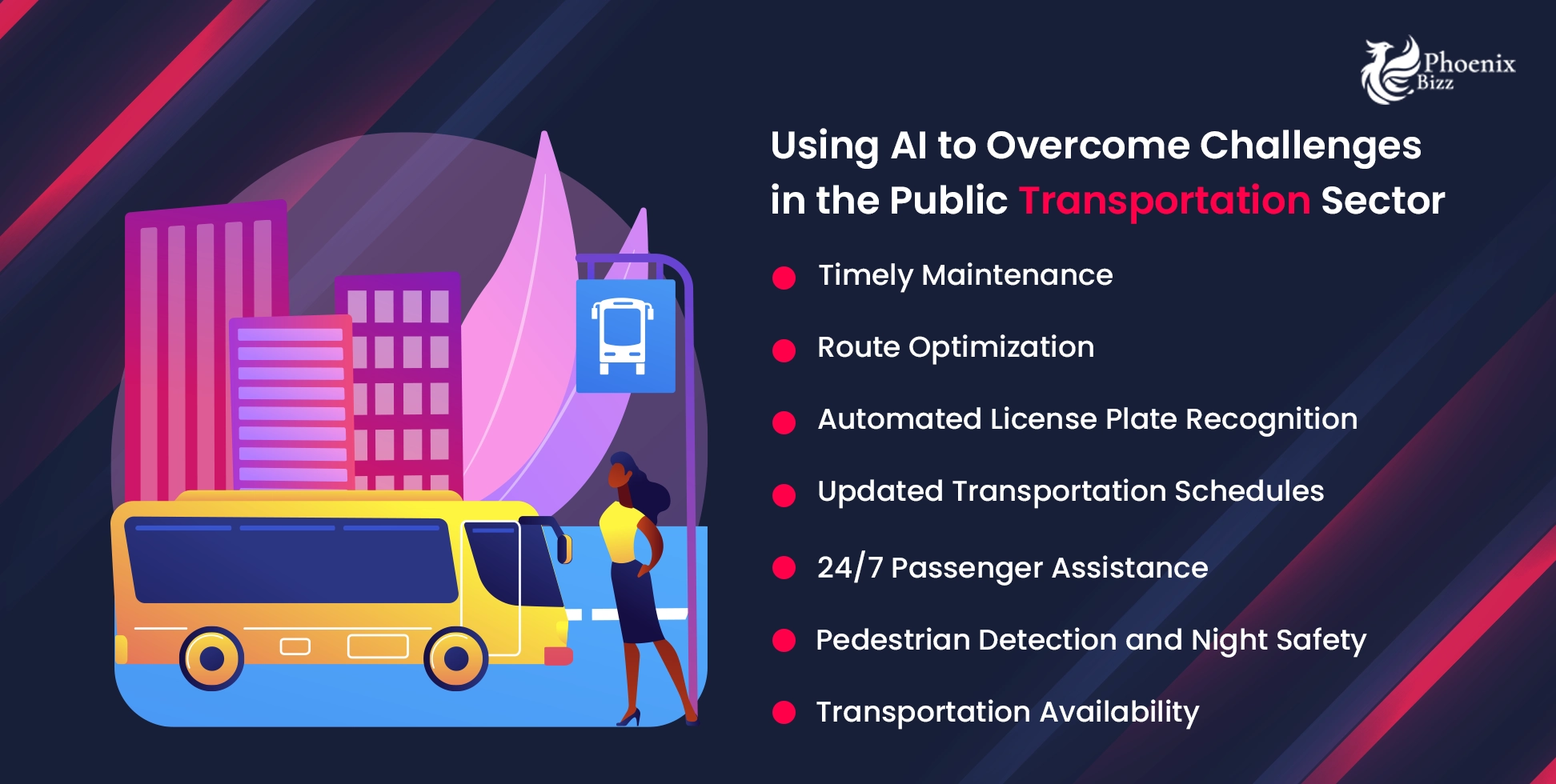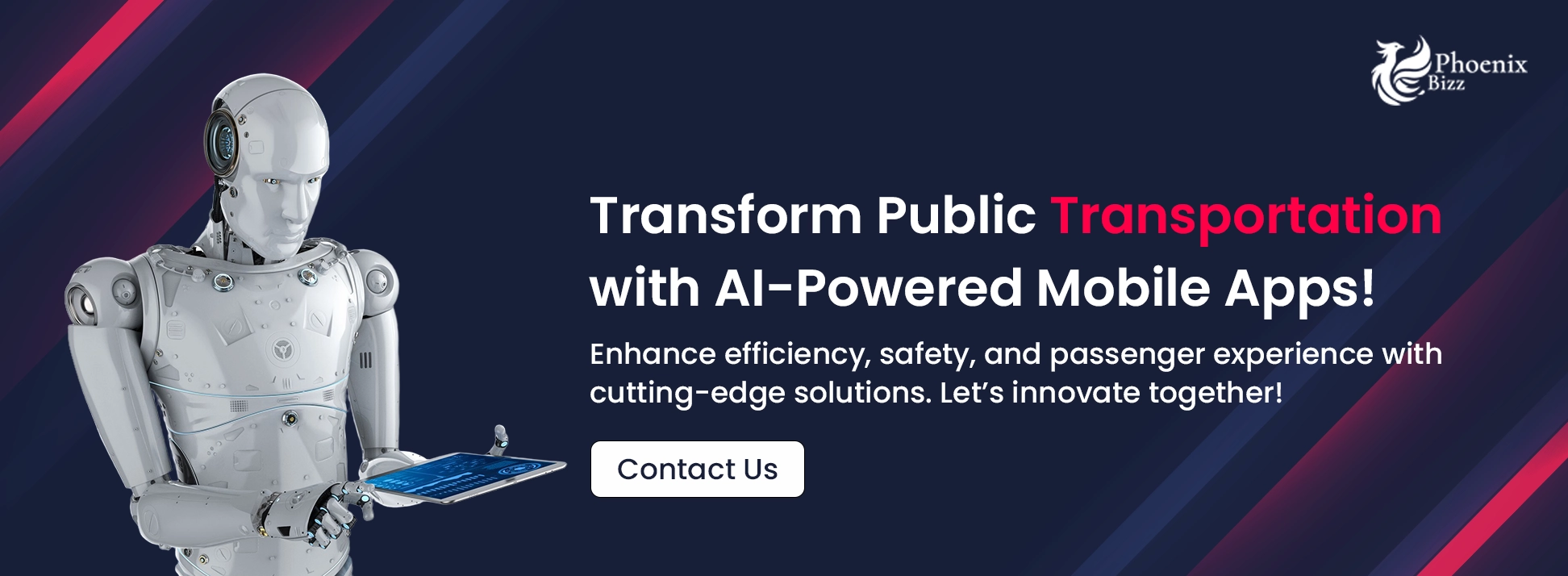February 21, 2025
By: PhoenixBizz Staff Writer
PhoenixBizz is a division of Sofvue, LLC
Printed with permission of Data Titan and Sofvue LLC
Although many people rely on cars for travel, public transportation offers a more affordable and convenient alternative. However, as times change, challenges such as vehicle maintenance, traffic management, and other public transit issues are becoming increasingly problematic. A 2025 report by The New York Post explains how the inaccessibility of the entire Second Avenue Lane during the UN General Assembly.
Public transportation systems frequently suffer from poor maintenance, leading to significant inconvenience for commuters. That said, advancements in technology, particularly Artificial Intelligence (AI), are beginning to show promise with solutions to modernize mass transit systems. AI has already revolutionized private transportation, with companies leveraging data analytics to optimize routes, enhance vehicle efficiency, and improve user experience, and the growing adoption of AI-powered mobile applications has transformed the way people navigate urban mobility. Now, the focus must shift toward integrating AI-driven innovations into public transportation, ensuring greater efficiency, reliability, and accessibility for all.
Daily Challenges Faced by Public Transportation Travelers
Public transportation in the U.S. includes buses, trains, subways, rail systems, and taxis, all of which serve as critical infrastructure for daily commuting. However, system inefficiencies—such as vehicle breakdowns or malfunctioning subways can cause significant disruptions. A stalled bus or an out-of-service transit system can lead to missed appointments, delayed workdays, or even lost job opportunities. Furthermore, disabled vehicles often contribute to traffic congestion, exacerbating delays in densely populated areas. These challenges highlight the need for modernized, technology-driven solutions to enhance the reliability and efficiency of public transportation.
Here is a list of the common challenges associated with public transportation:

1. Security Risks
Public transportation vehicles are often mismanaged, leading to frequent breakdowns and service disruptions. These failures result in significant delays or even complete cancellations, inconveniencing countless passengers who rely on public transportation for their daily commutes. Given the high volume of riders, ensuring passenger safety and system reliability falls under the government's responsibility. With a vast user base, the public transportation market in the United States plays a crucial role in urban mobility, necessitating improved infrastructure, maintenance strategies, and technological advancements to enhance efficiency and reliability. It is forecasted that we will have 133 million users of public transportation by 2029. Frequent accidents put the lives of so many passengers at risk.
2. Breakdowns and Service Disruptions
Aging public transportation systems frequently experience mechanical failures, including worn-out brakes, engine breakdowns, and deteriorating vehicle structures. These issues not only disrupt service but also pose significant safety risks to both passengers and pedestrians. Similarly, poorly maintained subway systems contribute to hazards such as malfunctioning doors, or faulty tracks—any of which can lead to serious injuries or fatalities.
3. Maintenance Issues and Financial Strain
Neglected maintenance causes minor mechanical issues to escalate into costly repairs. The financial burden of emergency fixes, as well as claims from accidents and injuries, places immense pressure on transit authorities. To cover these expenses, authorities often resort to fare increases or seek additional government subsidies, passing the costs onto taxpayers. This, in turn, reduces the affordability of public transportation. Beyond inefficiencies in the system, these challenges also impact the economy—delayed workers hinder productivity, and businesses suffer losses due to prolonged commutes and unreliable transit services.
4. Environmental and Public Health Impact
Poorly maintained public transit vehicles consume excess fuel due to engine inefficiencies, leading to increased carbon emissions and worsening air quality. This problem is particularly severe in urban areas where millions rely on public transportation daily. Outdated buses and trains with inefficient engines contribute heavily to pollution, which in turn exacerbates public health issues such as respiratory diseases and other pollution-related illnesses. Addressing these environmental and health concerns requires investment in cleaner, more sustainable transit solutions.
View our work: Blue Jay Logistics
Using AI to Overcome Challenges in the Public Transportation Sector
Now let’s explore the role of artificial intelligence, and how it can be used to overcome some of these challenges.

#1. Timely Maintenance
AI-powered mobile applications are revolutionizing vehicle maintenance by ensuring real-time monitoring of fleets. Manually tracking the condition and service history of thousands of public vehicles is impractical, but AI-enhanced systems store detailed records, including maintenance schedules, ongoing issues, and repair history. These systems proactively send alerts to transit staff for upcoming maintenance and, depending on system settings, can even automate service appointments, reducing the likelihood of breakdowns and costly repairs.
#2. Route Optimization
AI plays a crucial role in improving navigation and optimizing travel routes. Advanced AI-driven systems analyze traffic patterns and road conditions in real-time, alerting drivers to congestion, accidents, or road closures. For example, when key roads—such as Second Avenue Lane—become inaccessible, AI can suggest the most efficient alternative routes, minimizing delays and improving the passenger experience.
#3. Automated License Plate Recognition
AI-driven computer vision technology can enhance traffic management and law enforcement through automated license plate recognition (ALPR). Cameras and sensors collect data on vehicles, including location, time, and movement patterns. Law enforcement agencies can use this technology to track stolen vehicles, monitor traffic violations, and improve overall road safety. Additionally, ALPR enhances toll collection, parking enforcement, and traffic flow optimization by leveraging AI-based travel analytics.
#4. Updated Transportation Schedules
One of the biggest challenges commuters face is accessing accurate and up-to-date public transportation schedules. AI-powered transit systems can integrate with mobile applications, allowing passengers to check real-time bus, metro, and train schedules with ease. This not only enhances convenience but also helps manage overcrowding by providing better visibility into transit availability.
#5. 24/7 Passenger Assistance
Many transportation agencies are adopting AI chatbots to provide round-the-clock customer support. These AI-driven virtual assistants help commuters access transit information, report service issues, and receive instant assistance without human intervention. By streamlining communication, AI chatbots enhance customer service, reduce wait times, and improve the overall efficiency of public transportation networks.
#6. Pedestrian Detection and Night Safety
According to a report by the Governors Highway Safety Association GHSA, approximately 7,500 pedestrians lost their lives in the U.S. in 2021. Nighttime driving presents significant challenges, where even minor lapses in attention can result in serious accidents. AI-powered imaging systems in public transportation vehicles can enhance pedestrian safety by detecting individuals in low-light conditions and providing real-time alerts to drivers. Additionally, these systems utilize predictive analytics to anticipate pedestrian movements, further reducing the risk of collisions and improving road safety.
#7. Transportation Availability
Nearly 45% of Americans lack access to reliable public transportation. By leveraging AI and data analytics, transit agencies can pinpoint gaps in their networks and identify underserved areas. AI-driven insights enable agencies to optimize routes, allocate resources efficiently, and expand transit accessibility in regions with limited transportation options. Improved public transit availability not only enhances mobility but also alleviates financial burdens on communities by reducing dependency on expensive private transportation.
Integrating AI and Mobile Apps to Produce Smarter Public Transportation
Public transportation agencies are increasingly adopting Artificial Intelligence (AI) and mobile applications to enhance efficiency, safety, and passenger convenience. AI-driven predictive maintenance helps prevent unexpected vehicle breakdowns, while smart scheduling algorithms optimize routes and minimize delays. Mobile apps provide real-time updates, digital ticketing options, and AI-powered chatbots for instant commuter assistance. Additionally, AI-based data analysis enables agencies to improve traffic flow, reduce congestion, and enhance overall service quality—making public transportation more reliable and efficient.
Now, let’s explore the key aspects involved in combining AI and mobile apps for modernized public transportation systems.
Data Utilization
AI-powered transportation systems rely on vast amounts of data to analyze driving patterns, weather conditions, pedestrian movement, and other key factors. These insights enable AI algorithms to make informed decisions, assist drivers, and enhance transit operations. By continuously learning from real-time data, AI ensures optimized performance and improved safety measures.
GPS Tracking for Improved Navigation and Safety
Public transportation fleets operate across diverse regions, making vehicle tracking essential for efficiency and security. Integrating GPS tracking into mobile apps not only helps drivers navigate the best routes but also allows transit agencies to monitor vehicle locations in real time. This minimizes the risk of accidents and ensures a quick response from emergency services when needed. GPS tracking also enhances route planning, reducing congestion and improving overall transit reliability.
Here are five keyways GPS tracking improves public transportation efficiency:
![]()
1️⃣ Real-Time Route Optimization
GPS technology helps public transportation vehicles avoid traffic congestion, roadblocks, or construction zones by dynamically suggesting alternative routes. AI-integrated GPS systems analyze real-time data to reduce delays and improve arrival accuracy, ensuring a smoother transit experience.
2️⃣ Accident Prevention and Emergency Response
GPS tracking enables faster emergency assistance in case of accidents or breakdowns. By pinpointing the exact location of a vehicle in distress, transit agencies and emergency responders can quickly dispatch aid, reducing risks for passengers and drivers.
3️⃣ Improved Passenger Safety
AI-powered GPS tracking helps monitor driver behavior, detecting instances of harsh braking, sudden acceleration, or reckless driving. Transit agencies can use this data to enforce safer driving practices, conduct additional training, and improve overall passenger security.
4️⃣ Fleet Monitoring and Theft Prevention
Public transportation agencies can use GPS tracking to monitor vehicles in real-time, ensuring that buses, trains, and taxis remain within designated routes. Additionally, in cases of vehicle theft or unauthorized use, GPS tracking enables authorities to quickly locate and recover assets.
5️⃣ Enhanced Pedestrian and Cyclist Awareness
AI-powered GPS systems can detect pedestrian crossings and high-risk zones, alerting drivers to slow down in areas with increased foot traffic or cyclists. This added layer of awareness helps prevent collisions and ensures a safer urban environment.
Smart Travel Assistance
AI-powered public transit apps offer smart travel assistance, providing passengers with seamless commuting experiences. Travelers can access real-time schedules, receive instant updates, and even submit complaints without needing to visit transit offices. Additionally, mobile apps facilitate ticket purchases and smart card recharges, making public transportation more accessible and hassle-free for everyone.
Trust PhoenixBizz with all your AI-driven Mobile App Development Needs
Maximizing the potential of Artificial Intelligence (AI) requires more than just technological expertise—it demands a deep understanding of big data, large language models (LLMs), tokenization, and a wide range of advanced computing methodologies. Developing a viable AI-driven strategy for public transportation means integrating multiple data sources, leveraging predictive analytics, and designing scalable, efficient systems that enhance operations while staying within budget constraints.
At PhoenixBizz, we take a strategic, consultative approach to every AI-powered mobile app development project. Our process begins with 1 to 3 discovery calls, during which time we collaborate with you to define business objectives, operational challenges, timelines, and budget expectations. This critical phase ensures that we fully understand your unique requirements, that we are right fit for your project and that we can tailor a solution that aligns with your vision.
Once the foundational strategy is set, our team of seasoned architects and engineers collaborate closely with you to design a technology framework that optimally balances performance, scalability, and cost-effectiveness. Keeping your budget top of mind, we craft solutions that integrate seamlessly into your existing infrastructure while future-proofing your operations.
From there, our AI specialists, designers, and developers leverage innovative AI models, APIs, and advanced software libraries to build a robust, data-driven mobile application tailored to the needs of public transportation agencies. Whether it's optimizing fleet management, improving route planning, implementing predictive maintenance, or enhancing passenger experiences, our AI-powered solutions provide real-time insights and automation capabilities to streamline operations and reduce inefficiencies.
By combining AI innovation with our deep industry knowledge, PhoenixBizz helps transit authorities revolutionize their public transportation systems, making them more dependable, cost-effective, and commuter friendly. Let us help you transform your transportation network with AI-driven efficiency.
PhoenixBizz, a division of Sofvue LLC, exists to meet your software development demands. Being a leading mobile app development agency in Phoenix, Arizona, we serve countless clients from multiple industries across Arizona, and around the country.
Our dedicated team of designers and developers follows a comprehensive development process that produces 100% of your project required deliverables without sacrificing quality. For more information, call us at 623-845-2747 or send an email to [email protected].
RE: 11892
Citations:
The New York Post: https://nypost.com/2024/09/25/opinion/broken-subway-broken-empire-un-confab-adds-to-nycs-burden/
Statista: https://www.statista.com/outlook/mmo/shared-mobility/public-transportation/united-states
Institute for Transportation and Development Policy: https://itdp.org/2024/01/24/high-cost-transportation-united-states/
GHSA: https://www.ghsa.org/resources/Pedestrians23









